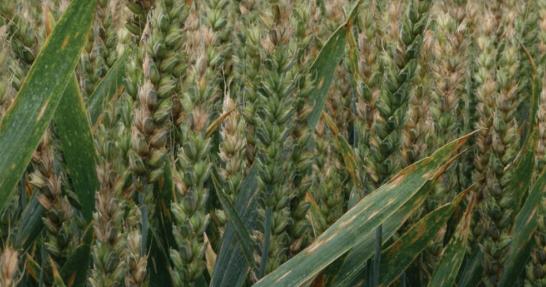Fusarium species release mycotoxins that are dangerous to both humans and livestock if ingested.
In cattle, fusarium poisoning can reduce feed intake by reducing appetite, hamper immune system health, and cause gastrointestinal irritation.
The risk of fusarium infection can be especially high if we experience extensive rainfall over the cereal flowering period, which is around late May and early June.
Fusarium species can infect all the major cereal crops (wheat, oats, and barley), as well as maize. Maize grown in a continuous rotation, and wheat after maize is particularly high risk.
For cereal crops out in the field, you should look for ‘white heads’, which are ears that appear to have gone white while the rest of the plants appear greener.
In awned varieties, you’ll often see the awns twisted and distorted, the grain sites themselves turning brown and dark purple.
Once harvested, contaminated grains will appear shrivelled with pink tips and or black patches and are impractical to remove.
Wheat crops that didn’t receive a fusarium active fungicide such as Prothioconazole or Pydiflumetafen at or before flowering should be closely investigated ahead of harvest this year.
Reference: https://ahdb.org.uk/
Error




